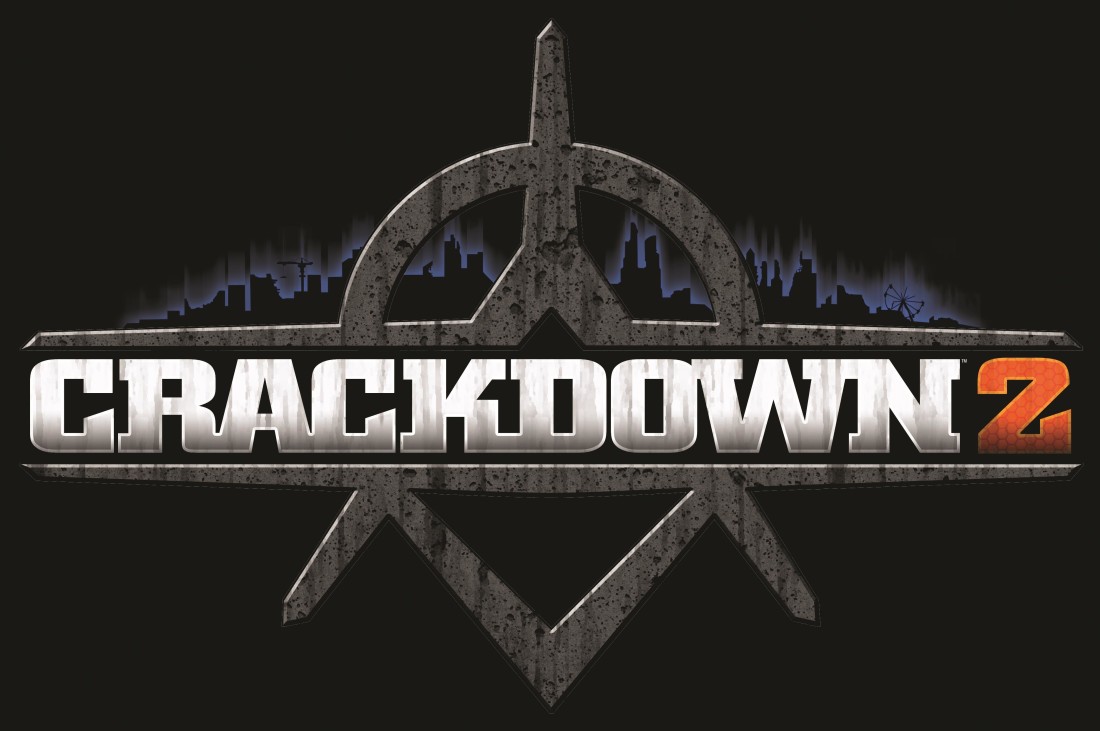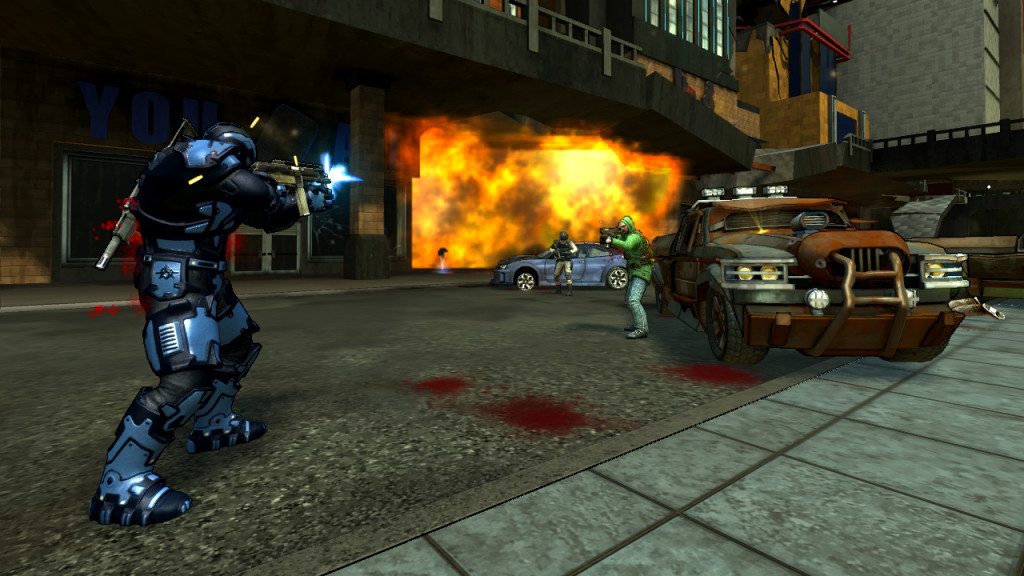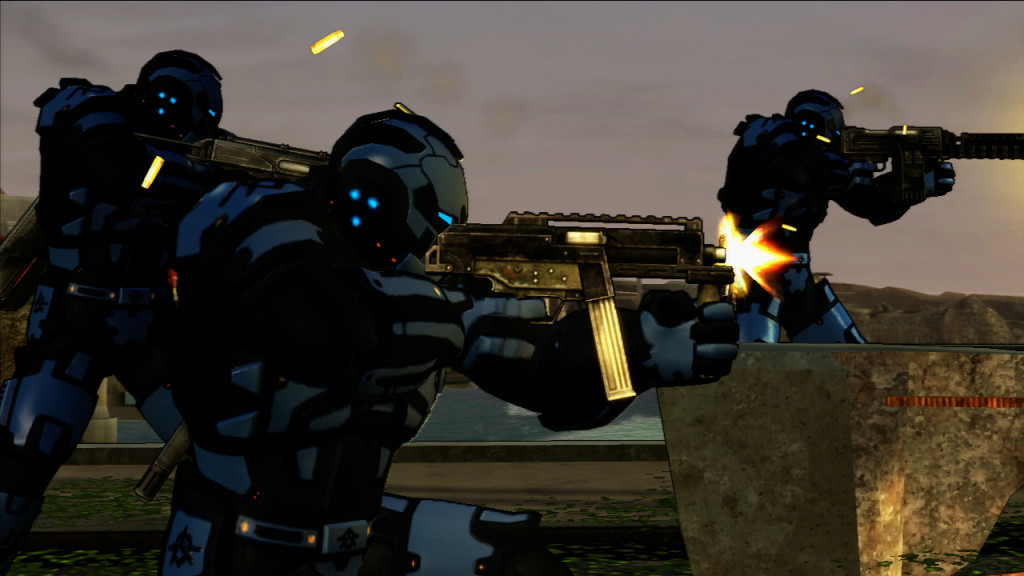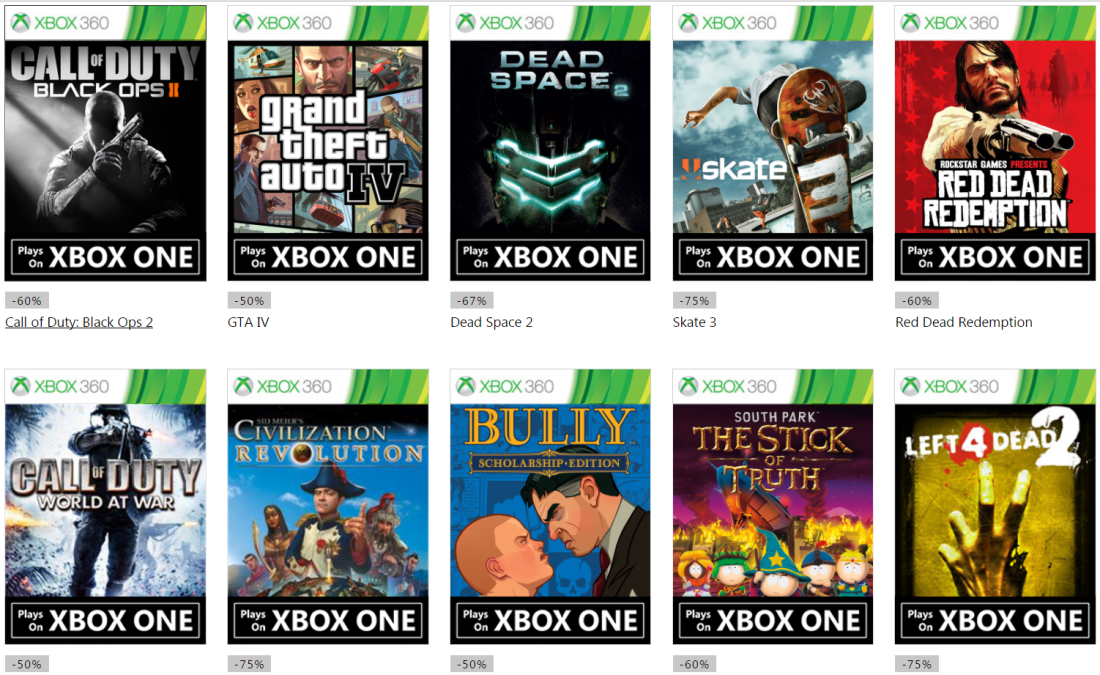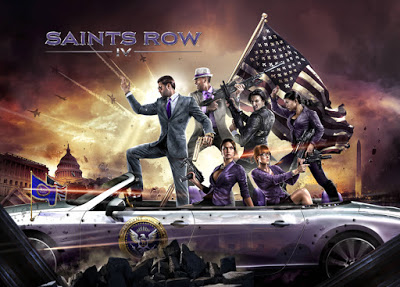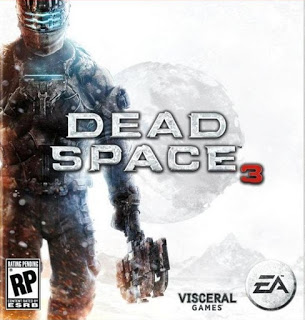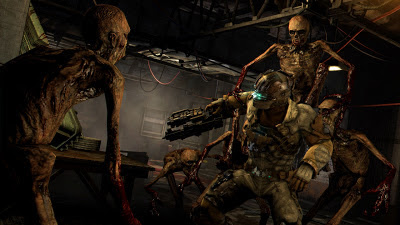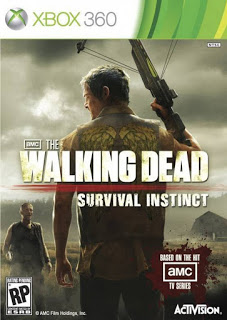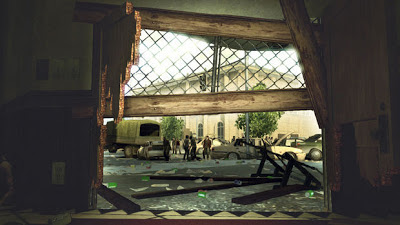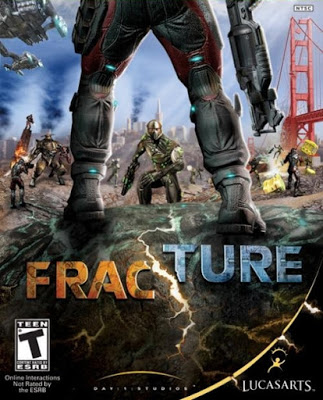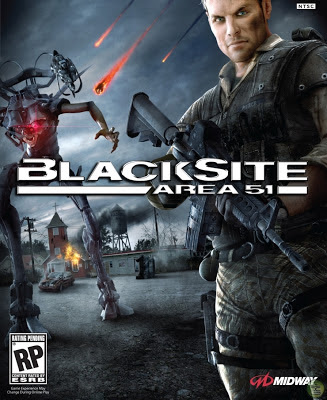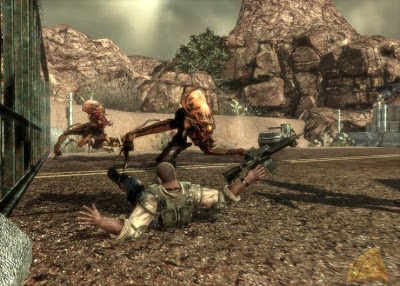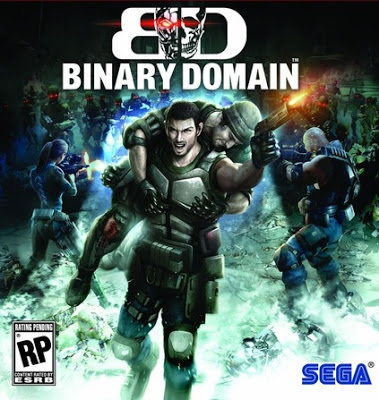Interview Rewind–Talking Crackdown 2 With Ruffian Games
Crackdown is one of my favorite franchises of all time, and I was ecstatic to finally don my Agency uniform once again when Crackdown 3 released on February 15th. It’s been interesting to see the mixed reviews that Crackdown 3 is getting so far, because its reception reminds me so much of the one that Crackdown 2 received eight and half years earlier. At the time, the expectations for the franchise were sky high, and some fans and critics didn’t feel Crackdown 2 did enough to differentiate itself from its predecessor. I actually felt it did a great job of taking the core Crackdown gameplay and adding in a new day/night cycle that brought a whole new enemy into the game–the Freaks.
I had a blast with Crackdown 2, but you don’t have to take my word for it, as Microsoft just added Crackdown 2 to Game Pass this week! You can download it now and play it yourself.
Anyway, I was a freelance games journalist when Crackdown 2 was released in July of 2010, and I had the chance to interview co-founder of Ruffian Games and Crackdown 2 Creative Director Billy Thomson. Here is what he had to say about Crackdown 2 just before the game’s launch in 2010:
Brian: As you approached the development of Crackdown 2, what were the elements of the first game that you wanted to build on for the sequel?
Billy Thomson: There were a few things we felt were lacking in the first game that we should improve on. The big ones were the number of players available in co-op–admittedly this wasn’t a failing in the first game, more of an area we wanted to expand–we also had no online competitive game modes, the hand to hand combat didn’t work very well at all and we didn’t have enough variation in the type of objectives the player could take on. These were the key areas we focused on right at the start of development of Crackdown 2.
The visuals in Crackdown 2 seem to have evolved a bit from the first game. How would you describe the changes to the look of Pacific City?
The visual style has remained the same, but we’ve increased the resolution on the characters, equipment and vehicles and also did a lot more work on the shaders applied to the entire game world. There’s a visible layer of grit and deterioration covering most of the game world, which accounts for the ten year period of neglect and abuse the city has been through. We’ve also done more work on our lighting, shadows and ambient occlusion to make the city feel more solid and believable. Overall, the artistic style hasn’t changed; it’s just the setting of the city has required the visuals to take on a slightly grittier appearance.
Speaking of which, the strongest character in the first Crackdown was Pacific City itself. How much has that character changed in Crackdown 2, and what will still be familiar to players of the first game?
The environment certainly played a big role in the first game and we’ve done everything we can to keep the right things familiar and mix up the rest as much as possible. Key landmarks remain in the same place as they were before, allowing players to use them as navigation aids, but most of them have been completely replaced with new structures, or the original structure has been drastically altered–normally partially destroyed. We’ve kept the same road layout–albeit blocked at certain points with the quarantine walls that were built around the city during the first few years of the Freak virus outbreak–as we didn’t want players to need to learn their way around all of the streets of Pacific City again. What we really wanted players to need to explore and relearn was the rooftops, and that’s where we’ve spent most of our time. There are also nine large subterranean Freak Lairs dotted around the city that will give the player another level of verticality to deal with too.
How did you deal with the challenge of creating a narrative in an open world game like Crackdown 2?
Creating a fully unfolding story in a truly freeform game is pretty much impossible. The amount of branches you would need to deal with if the player came at the many different objectives in different orders is simply too many to imagine. So we’ve focused our story around discovering the truth about what happened during the ten years in between Crackdown and Crackdown 2. How did the Freak virus reappear? Who are Cell, why did they form and why do they hate the Agency? What happened to the Agents during the ten years that had passed? Are the Agency withholding an antidote to the Freak virus? What is Project Sunburst and what is it ultimately capable of? These are the kind of questions the player can try to find answers to during their exploration of Pacific City.
One of the central concepts of Crackdown 2 is the difference between day and night. Just how different will the experience be for players depending on what time of day they venture out into Pacific City?
The difference from a visual and gameplay point of view is drastic. During daylight hours, the streets are patrolled by Agency Peacekeeper vehicles and the odd Cell vehicle. The few civilians who have avoided infection wander the streets looking for anything they can get their hands on to survive–food, water, fuel, weapons. Some people who have managed to get their hands on these valuable resources will be found selling them on at extortionate prices. It’s a bleak place, but it’s as close to normality as you’ll get in Pacific City during daylight hours.
When night starts to fall, the civilians begin to scatter, running into the buildings around the city to hide from the Freaks. When night actually falls, Freaks begin pouring from every nook and cranny in the city. Slowly at first, then, gathering in number and frequency, they pour out onto the city streets. Soon enough, the streets are packed with the shambling infected masses. Thousands and thousands of them fill the streets and they will attack any uninfected person they find, especially Agents.
How are the Freaks in Crackdown 2 different from other zombie-style creatures we’ve seen in games over the past few years?
The Scroungers – lowest level Freaks – move like the infected in 28 Days Later; they shamble around then spring to life when they detect a target. None of the Freaks eat flesh, they are just mindlessly violent, they find their target and kill them, then move on to the next one. Normally during the frenzied attacks, their victims are infected and become Freaks themselves. We also have some really nasty Freaks, some that are more agile than a top level Agent, allowing them to run faster, jump higher and further than any Agent, stopping the rooftops from being the safe haven they once were for Agents. There are others who are stronger than top level Agents, too, allowing them to lift any object they find in the city and use it as a weapon against their target, throwing vehicles at the player when they least expect it. We also have some other Freaks that the player will come across later in the game, but I’ll leave the players to find out about those themselves.
Collecting orbs and leveling up was a huge part of the game in the first Crackdown. How does Crackdown 2 approach leveling?
Pretty much the same way. Basically, as you use one of the five key skills to progress in the game, we will award skills points for that skill. Most of the time that takes the form of killing bad guys, which is where the “skills for kills” line comes from. We’ve also added more ways to progress each of the skills on top of simply killing enemies, though. We now have more vehicle maneuvers that players can perform to increase their driving skill, we have more Orb types, like Renegade Orbs and Online Orbs, to progress your all of your skills and we’ve also created more abilities, vehicles, weapons and gadgets that the player can unlock through skill progression. As you play the game, you will become stronger, more agile and have access to ever more powerful equipment to help you complete the challenges that lie ahead. Crackdown 2 keeps on giving, long into the gameplay experience. There are many great reasons to keep leveling each of the five skills.
With the four-player co-op system, will players be able to gain experience in someone else’s game and take it back into their single player game?
Yes, all of the skills you improve will come back with you, as well as all the orbs you collect, any Achievements you were rewarded and any leaderboard scores you posted. The only thing that doesn’t come back with you is the objectives you completed in another player’s game. We avoided this due to the difficulty of truly knowing which objectives you actually had a hand in completing. It’s incredibly difficult to get this right in a game that is so open ended. You essentially end up trying to second guess whether or not the player would deem themselves part of the completion or not–they may have simply driven past or jumped over the location of the objective and killed one enemy on their way, it’s so hard to tell.
What have you done with the competitive multiplayer modes in Crackdown 2 that sets the game apart from everything else out there?
The approach we took with our competitive online game modes is quite old school. The way the player moves and the type of over the top abilities, weaponry and vehicles that we have to play with meant that we would never fit into the kind of tactical gameplay experience that games like COD4 or Counter Strike do so well. We knew we would need to move towards a slightly more chaotic, energized gameplay experience. We’re essentially more like a steroid induced, balls out game of Quake, albeit with the ability to fly helicopters, leap up and over buildings and hurl large vehicles around as if they were toys. I don’t think there’s anything out there right now that plays like Crackdown 2 in an online competitive game mode. It’s completely insane.
You’ve created a series of animated comics that fill in some of the gaps between the Crackdown 1 and 2. Given that Crackdown has such a comic book feel to it, have you considered fully extending the franchise into comics, in either a limited or ongoing series?
Ruffian Games would love to see the franchise branch out into these kind of areas, but we don’t own the IP, Microsoft do, so any plans to expand the franchise would be entirely up to them. Personally, I’d love to see more stories of the Crackdown world told in comic book form. You’ll just have to wait and see what Microsoft have planned for the franchise in the future.
Finally, as Crackdown 2 releases this week, what is the one aspect of the game you are most excited about players experiencing?
I think it’s got to be four player co-op in the full city with four fully leveled up Agents once you have maxed out your skills you have access to everything the game has to offer. At this stage, the game turns into a huge playground where you and your three friends can play with all the toys and do anything you want to with absolutely no restrictions. There is so much depth in the range of abilities, weapons, gadgets, vehicles and objectives that players can have a truly endless supply of fun experiences. It’s so hard to describe, I can’t ever remember playing a game that made me laugh so often and so hard. Even after spending thousands of hours in this game world, I still see something new each time I play with a group of people. It’s chaotic, emergent, mindless, piss yourself laughing, unadulterated fun.

